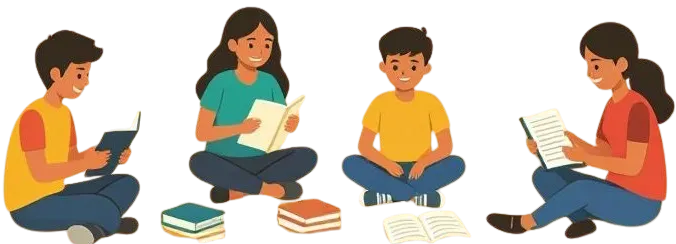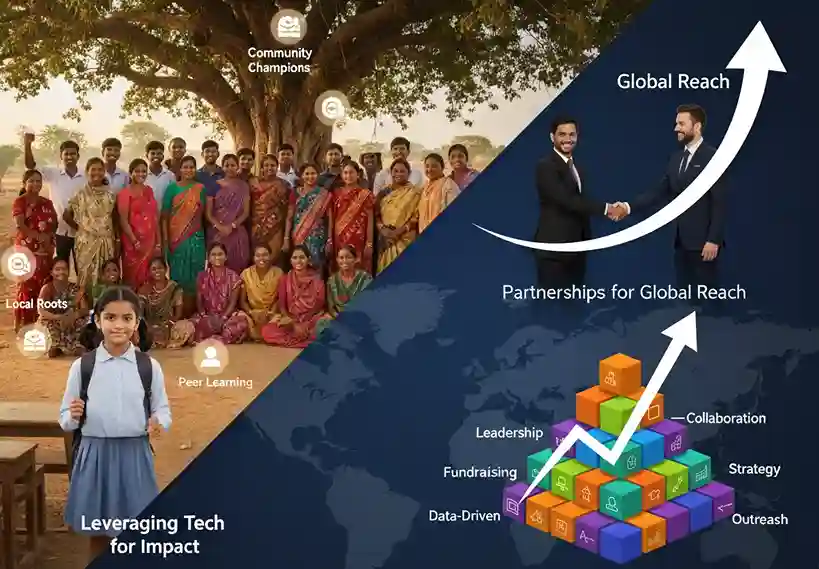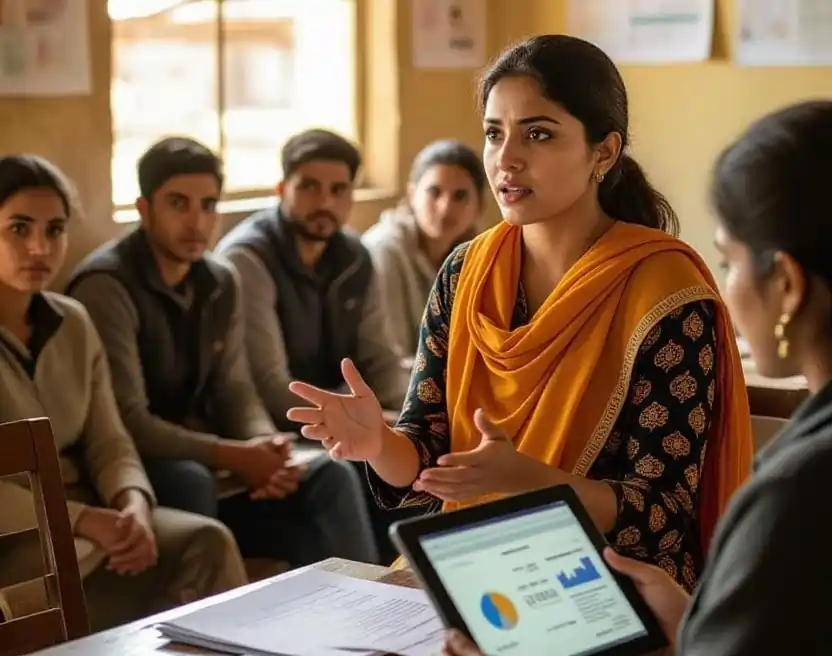The Stark Reality of Lack of Education in India
The lack of education in India remains a critical barrier to national progress in 2025. Imagine a classroom in a remote village: faded walls, no electricity, and empty seats where children should be learning. This isn’t fiction; it’s the daily reality for millions.
According to the latest data, over 1.17 million children are out of school across India. This lack of education in India isn’t just a statistic; it’s a human crisis robbing generations of opportunities. With India aiming to be a global tech hub, how can we succeed when 19.1% of adults are illiterate?
In this updated 2025 blog post, we dive into 15 eye-opening statistics on the education crisis in India. Backed by recent reports from sources like the Periodic Labour Force Survey (PLFS) 2023-24 and UDISE+ 2024-25, these numbers reveal deep-rooted issues. We’ll also spotlight solutions, including the impactful work of Unessa Foundation in bridging these gaps.
Top 5 Shocking Stats on Lack of Education in India at a Glance
Here’s a quick overview in a table for easy reference:
| Statistic | Value (2025 Update) | Source |
|---|---|---|
| Adult Illiteracy Rate | 19.1% | PLFS 2023-24 |
| Children Out of School | 1.17 million | MoE 2024-25 |
| Education Spending as % of GDP | ~4.3% | Economic Surveys |
| Female vs. Male Literacy | 69.4% vs. 84.7% | AISHE Report |
| Rural Adult Non-Literacy | 22.5% | PLFS 2023-24 |
These figures underscore the urgent education crisis in India, but let’s explore them in detail.
Deep Dive: 15 Startling Statistics on Lack of Education in India (2025)
- 19.1% of Adults Are Illiterate Based on PLFS 2023-24. Nearly one in five Indian adults cannot read or write. In rural areas like Bihar, this locks people like farmer Ravi out of essential services, perpetuating poverty.
- 1.17 Million Children Are Out of School The Ministry of Education reports 1.17 million out-of-school children in 2024-25, mainly in states like Uttar Pradesh. Many work in fields instead of classrooms, highlighting the education crisis in India.
- Only ~4.3% of GDP is spent on Education. India’s education expenditure hovers around 4.3% of GDP, below the recommended 6%. This leads to overcrowded schools and outdated resources, unlike Finland’s 6.5%.
- Female Literacy at 69.4%, Male at 84.7% A 15.3% gender gap persists, driven by cultural norms. Stories like Aisha’s from Telangana show how girls are often pulled from school for household duties.
- Urban Literacy at 88.9%, Rural at 77.5% The urban-rural literacy gap is stark, with rural schools lacking basics like electricity. In Odisha, children trek kilometers to under-equipped facilities.
- State Gaps: Bihar ~74%, Kerala >96% Kerala’s high literacy contrasts with Bihar’s lower rates due to infrastructure issues.
- Dropout Rate: 1.9% Primary, 5.2% Upper Primary. Economic pressures cause early dropouts, especially in Uttar Pradesh.
- 29% of Girls Drop Out Before Completing Elementary school. Sanitation, safety, and marriage expectations contribute to this.
- Only 4.1% of the Workforce is Formally Vocationally Trained. Low vocational training leaves youth unprepared for jobs.
- 57% of Schools Have Functional Computer Labs. Digital access is improving, but it is still limited in rural areas.
- 22.5% of Rural Adults Are Non-Literate. This affects daily life, from banking to healthcare.
- ~15% of Teachers Are Contract-Based (Updated Estimate). Underpaid contract teachers lead to absenteeism and poor quality.
- Illiteracy Among Female Agricultural Workers: 30-50% (Estimated). Women like Lakshmi in Madhya Pradesh remain trapped in poverty cycles.
- Exam Scandals Continue to Erode Trust: 2024 leaks in Bihar demoralized students, undermining the system.
- Mizoram Achieves 98.2% Literacy: A model of success through inclusive policies, worth replicating.
Causes and Consequences of the Education Crisis in India
The lack of education in India stems from:
- Poverty: Families choose work over school.
- Gender Norms: Girls face early marriage and chores.
- Infrastructure Gaps: No toilets, water, or tech.
- Teacher Shortages: Low pay and training.
- Policy Inequities: Uneven state investments.
Consequences include high unemployment, health issues, and economic drag. Addressing illiteracy in India could boost GDP by unlocking human potential.

Unessa Foundation's Role in Combating Lack of Education in India
Unessa Foundation is at the forefront, reaching 10,000+ children in 2024 across five states. Their mobile libraries, digital vans, and peer educator programs make education accessible. Volunteer Anika in Pune taught 50 kids to read, proof of grassroots impact.
Support them: ₹500 funds supplies for one child. Visit Unessa Foundation to donate or volunteer.

Conclusion: Turning Statistics into Solutions for Lack of Education in India
The 2025 data paints a grim picture: 19.1% adult illiteracy and 1.17 million out-of-school children demand action. Yet, successes in Mizoram and Unessa Foundation’s efforts show that change is possible.
Take action:
- Share this post on social media.
- Volunteer locally.
- Donate to Unessa Foundation.
As Mandela said, “Education is the most powerful weapon to change the world.” Let’s address the lack of education in India now.



















